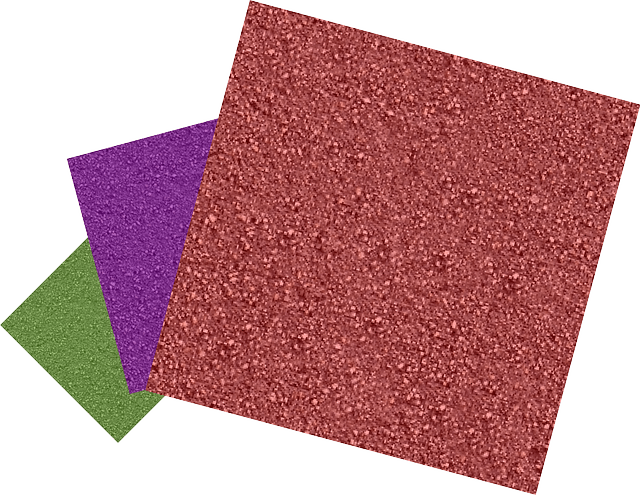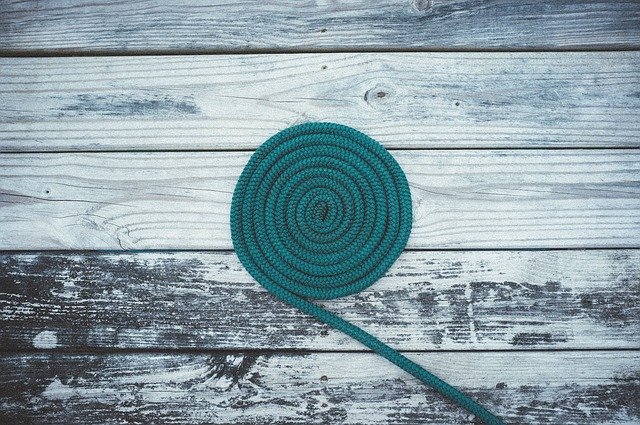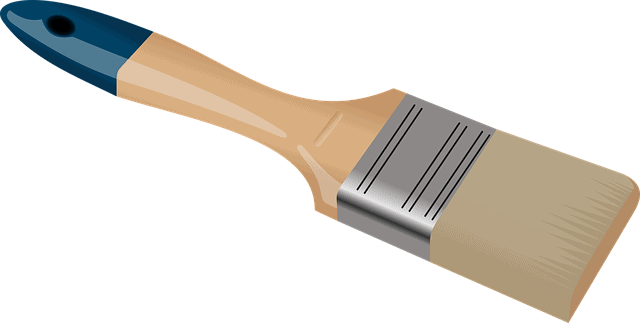How to Remove Oil Stains from Wall Paint?
Oil stain removal can be problematic to many especially when it occurs on a painted surface. Cleaning the stained area without affecting the background color may not be easier.

Here’s how to remove oil stains from wall paint; use Baking Soda, White vinegar, Ammonia, WD 40, or TSP (Trisodium Phosphate) (these products won’t bleach or damage the painted surfaces).
These compounds feature a unique chemical formula that breaks down the oil stains molecules (wet or dry paint) into a thick viscous fluid that is easier to clean.
You will be able to eliminate oil stains from various surfaces/fabrics in a couple of minutes provided the right procedure, and precautions are taken into considerations. See Also: Paint Sprayer for Furniture
Details: How to Remove Oil Stains From Wall Paint
Notably, you need to identify the type of wall paint applied at the background to better select stain remover. However, if you experience conflictive challenges, carry out a drop test experiment to ascertain a particular oil stain remover.
a. Baking Soda
Prepare four tablespoons of baking soda and mix with 2 cups of warm water. Stir appropriately and rub the solution over the oil stains gently using a piece of clean cloth or sponge.
The compound reacts with oil stain breaking it into a thin fluid that dissolves in water. The baking soda solution won’t affect the wall paint during application. However, you must be keen not to apply an excess abrasive force that may affect the primary paint layer during oil stain removal.
b. White vinegar
White vinegar is composed of acetic acid (3% to 5%) and water (90% to 99%) plus other additives that improve flavor. The acidity part of white vinegar breaks down the oil stain to form a thin viscous fluid on the surface.
White vinegar won’t affect the wall paint since the active agents aren’t strong to penetrate the paint molecular bonds. Besides, the water component is excited to help in the quick oil stain removal process.
You will need to add three tablespoons of white vinegar in 3 liters of warm water (to dilute the solvent). Then, use the sponge to wipe off the oil stain on the wall pain.
Remember, you should allow a few minutes (after application) for the white vinegar to act if the oil stain is dried or thick.
c. Ammonia
Select/purchase general-purpose ammonia (not highly concentrated) for oil stains removal. Mix one cup with 3 cups of warm water (1:3 ratio). Stir evenly for one minute.
Using a piece of cloth, soak it in the solution and gently wipe the oil stains. Dried oil stains should be allowed to quench for 2 minutes before you wipe off. The ammonium solution decomposes the oil stains leaving behind a clean surface.
NB: Wear hand gloves (hand protection) and nose mask (smelly) during application.
d. WD 40
WD 40 is a commercially made oil stain removal that features strong, active agents, which decomposes oil stains (dry or wet) in a couple of seconds upon application. The solvent features an organic-based structure specially formulated to break down oil stain molecular bonds without affecting the wall paint layer.
The classic trigger and point design that comes with WD 40 allows optional delivery and point application, thus minimizing spillage (wastage). Moreover, WD is portable and fast drying.
The solvent integrates biodegradable properties and natural additives that are safe for human use – won’t cause skin irritation/burn.
Importantly, WD 40 can also be used on other types of stains such as vegetable stains, coffee stains, ink stains, etc.
e. TSP (Trisodium Phosphate)
Trisodium Phosphate is a reliable oil stain cleaner that works by disintegrating the oil stain molecular bonds to form a thick viscous liquid (stick-free) on the painted surface without affecting the wall paint.
The concentration should be low if used on wooden surfaces to prevent bleaching of primary material when left for a long time before cleaning.
Add ½ cup of Trisodium Phosphate into 4 cups of water and stir evenly for one minute. Scrub the solution over the oil-stained area using a sponge gently.
Consider wearing gloves to avoid skin irritation associated with Trisodium Phosphate. See Also: Stain for Swing Set ed.
Precautions and Steps to Follow When Removing Oil-Stains from Wall Paint
Before carrying out the stain removal process, you need to adhere to some of the precaution highlighted below:
- When using ammonia, wear a face mask (respirator) – has a chocking smell that may irritate your nasal cavity when inhaled.
- Wear hand gloves when applying ammonium solution, Trisodium Phosphate, baking soda, and white vinegar – these oil stain remover irritates the skin on contact or causes a burning sensation. Though the effect may be mild, prolonged usage burns the melanin.
- Store these products away from pets and children. When swallowed, they cause stomach upset, vomiting, burn, and may lead to death if not attended in 24 hours.
- Dispose remained solution after cleaning oil stains – you can drain them in a sink or waste pit.
The procedure of each of the above oil stain removers may vary slightly. However, there are basic steps that must be followed, and which apply to either of them. These include:
- Blow dirt over the stained area to improve oil stain remover’s action time – avoid touching the stain or pre-wiping the stained area before application. Such actions lead to the spread of oil stains in other areas instead.
- Carry out the stained area’s drop experiment to ascertain whether the compound you are about to use with work effectively without affecting the wall paint coating or primary surface material.
- Consider applying a large amount over dry stain than wet oil stain during application – allow quenching time too.
- Soak the sponge/piece of cloth evenly in stain removal solvent (for liquid oil stain removers) and rinse gently. You can squeeze the sponge over the stained area to cover the stained area entirely before wiping.
- Scrub/rub the cured oil stain with wet sponge/piece of cloth gently – avoid excess abrasive force as it may affect the wall paint grain and primary surface material.
- Finally, clean the stained oil area with soapy detergent (eliminates remains of oil stain remover). Wipe the area with a clean cloth to dry the surface.
You can use this procedure even when cleaning oil stains with commercial stain removers too. See Also: Deck Sealer for Pressure Treated Wood.
What are Some of Homemade Stain Removers?
You can easily prepare or use items commonly found at home for oil stain removal. Some of homemade oil stain removal include:
1. Dish soap and Shampoo
Dilute a small amount of dish soap or Shampoo in a basin. Using a sponge, rub the viscous fluid over the oil strain till its wholly removed.
Avoid using undiluted dish soap or Shampoo as it may affect the surface material. See Also: Sprayer for Latex Paint
2. Cornstarch
Prepare a cornstarch paste in a bold. Spread the paste over the oil-stained area and leave it for 10 minutes to quench.
Then clean to dryness using a wet cloth. Do not scratch the cornstarch paste during removal.
3. Aloe Vera gel
Prepare Aloe Vera extract in a mortar and squeeze through a sieve to form a thick viscous liquid. Dilute the extract with little water.
Then, spread the Aloe Vera over the oil-stained surface and leave it for 5 minutes to cure. The clean the residue with clean water.
4. Coca Cola Drink
Soak a sponge in Coca Cola in a basin and wipe the oil-stained area gently. The Coca Cola ingredients break down the oil stains into a thick viscous fluid that is cleaned efficiently.
However, Coca Cola may deface or bleach latex paint if not diluted.
5. Talcum Powder/Baby Powder
Rub the talcum powder over the oil-stained area gently for sometimes time till the stain is entirely removed.
Ensure that you cover the stained section complexly before you start rubbing to avoid the spread of marginal oil stain.
6. Salt and rubbing alcohol
Mix 10g of table salt with 100ml of rubbing alcohol/denatured alcohol and stir until it dissolves. Using a sponge, apply the oil stain area and leave it for 4 minutes to quench.
Wipe the residue with a clean piece of cloth gently. Do not rub table salt directly as it may damage the paint surface – not significant too.
7. Toothpaste
Rub toothpaste over the oil-stained surface until the stain is completely removed. You should wear gloves during application to avoid getting oil stains and skin irritation too.
8. Chalk
Scratch, a piece chalk over the oil-stained until the stain is eliminated.
Alternatively, spread chalk dust powder over the oil stain and rub gently until the oil stain is cleaned.
Remember, chalk powder cause nasal irritation when inhaled – wear a respirator. See Also: Deck Stain for Pressure Treated Wood.
Which are the Best Commercial Oil Stain Remover?
1. ACT Concrete Cleaner Eco Friendly Removes Oil Grease Mildew Stains
Act Concrete is an oil stain remover that features strong, active agents, which act instantly upon application. The complex chemical structure is easily activated and breaks the oil molecule without affecting the wall paint.
Besides, Act concrete is environmentally friendly and will also remove other stains such as gum, grease, animal waste, and mold.
You can use Act Concrete on surfaces such as wood, metal, concrete, ceramics, marble, or plastics to remove oil stain without any problem.
2. Woolite INSTAclean Permanent Stain Remover
Woolite features a classic nozzle (for point application) and a simple pull trigger that allows controlled spraying. The solvent is self-activating and breaks the oil stain instantly on contact.
Moreover, Woolite comes in two packs that can be refilled. The stable base design that comes with the product allows easier storage, and it’s highly portable.
Woolite will not only clean oil stain but also remove odor in the room during action time. Notably, this compound works for stained carpet, rug, furniture, and sinks too.
3. Biokleen Bac-Out Natural Enzyme Stain and Odor Remover
Biokleen is a biodegradable oil stain remover that features a super active natural enzyme activator, which works effectively without affecting the primary color.
The solvent is packed in a large container (covers a wide area) that’s is highly portable and stable. Biokleen works in 5 to 10 seconds after application and won’t irritate you nasal if you inhale.
Besides, Biokleen is eco-friendly, plant-based, non-toxic, and eliminates odor in the room during the oil stains removal process.
Importantly, Biocleen can be used on fabrics, ceramics, and laminated materials too.
What are Problems Associated with Oil Stain removal?
The oil stains removal process is not simple at times, mainly when staining occurs on painted surfaces. Some of the problems associated with oil stain removal include:
- Time-consuming – old oil stains take longer to get cleaned.
- Its stains someone’s hands/gloves during removal – extra cleaning of protective gears are needed
- Oil tin my deface the surface, especially wood or walls – destroys final outlook
- Most oil stain removers are scented and may irritate the nasal cavity
- Some stain removers cause skin irritation – may burn your skin on contact
- Subsequent removal of oil stains on particular surfaces (e.g., wood, ceramics, sink, etc.) destroys the beauty and final finish.
See Also: Exterior Paint to Prevent Mold
Conclusion
For effective removal of oil stains, consider using baking soda, ammonia, TSP, or WD 40. These compounds work by weakening/breaking down the oil stain molecular bonds into a simple form that can be cleaned easily.
You can also use your homemade oil stain removers such as Aloe Vera, white vinegar, toothpaste, chalk powder, cornstarch, or dish soap.
Alternatively, you can purchase commercial oil stain remover from the assorted samples in this article. Remember to adhere to precautions and procedures highlighted in this article during the application.




